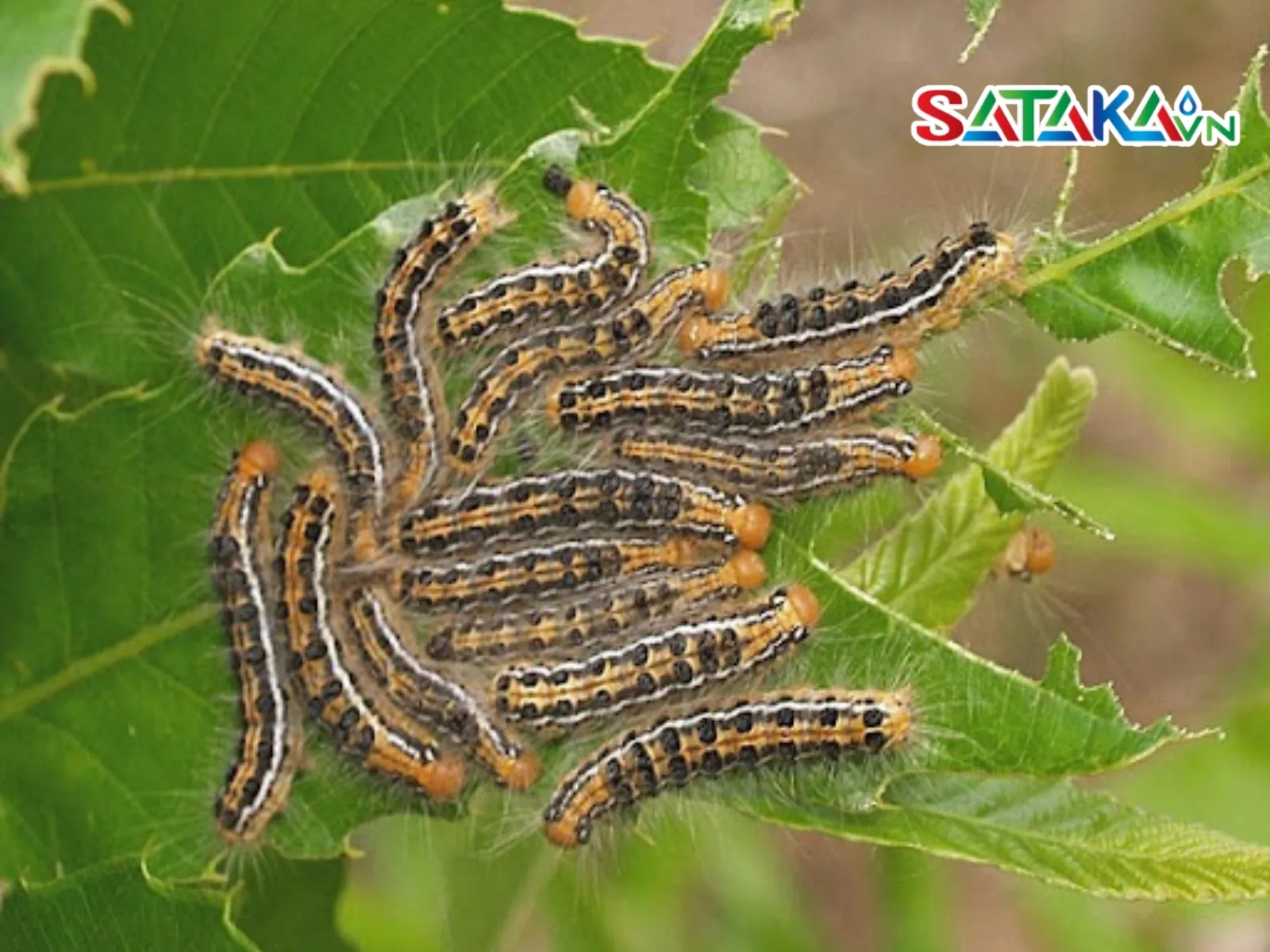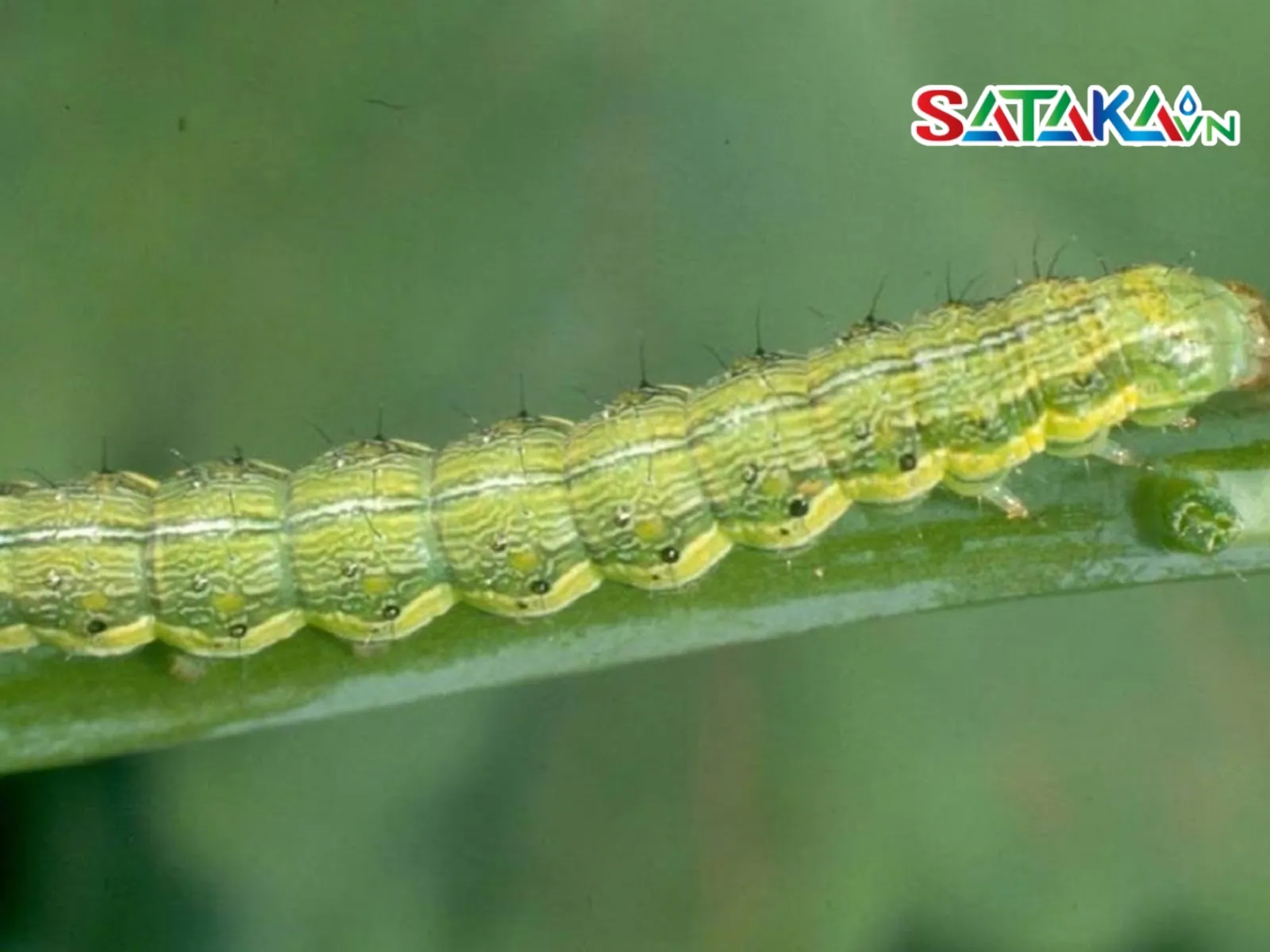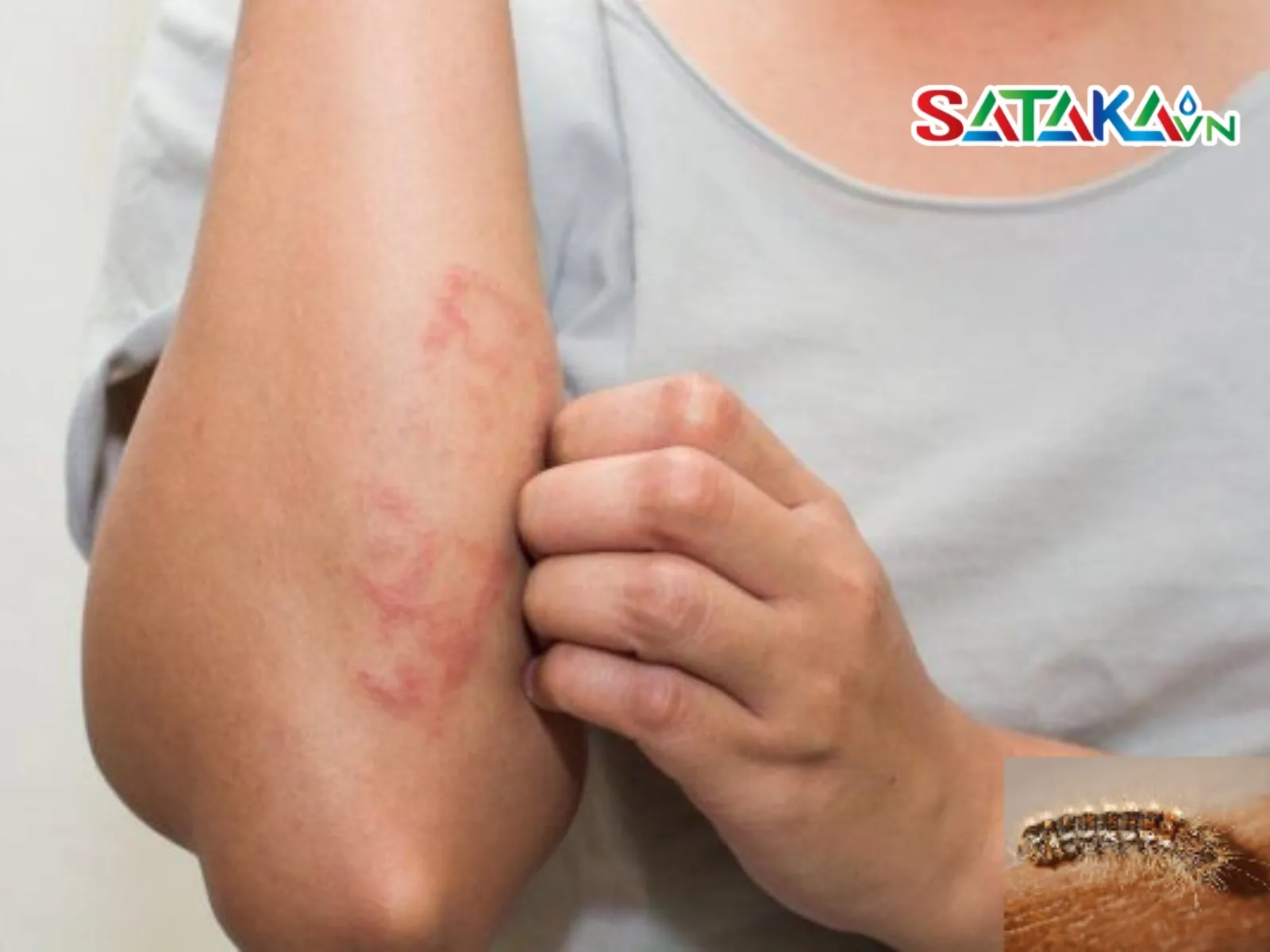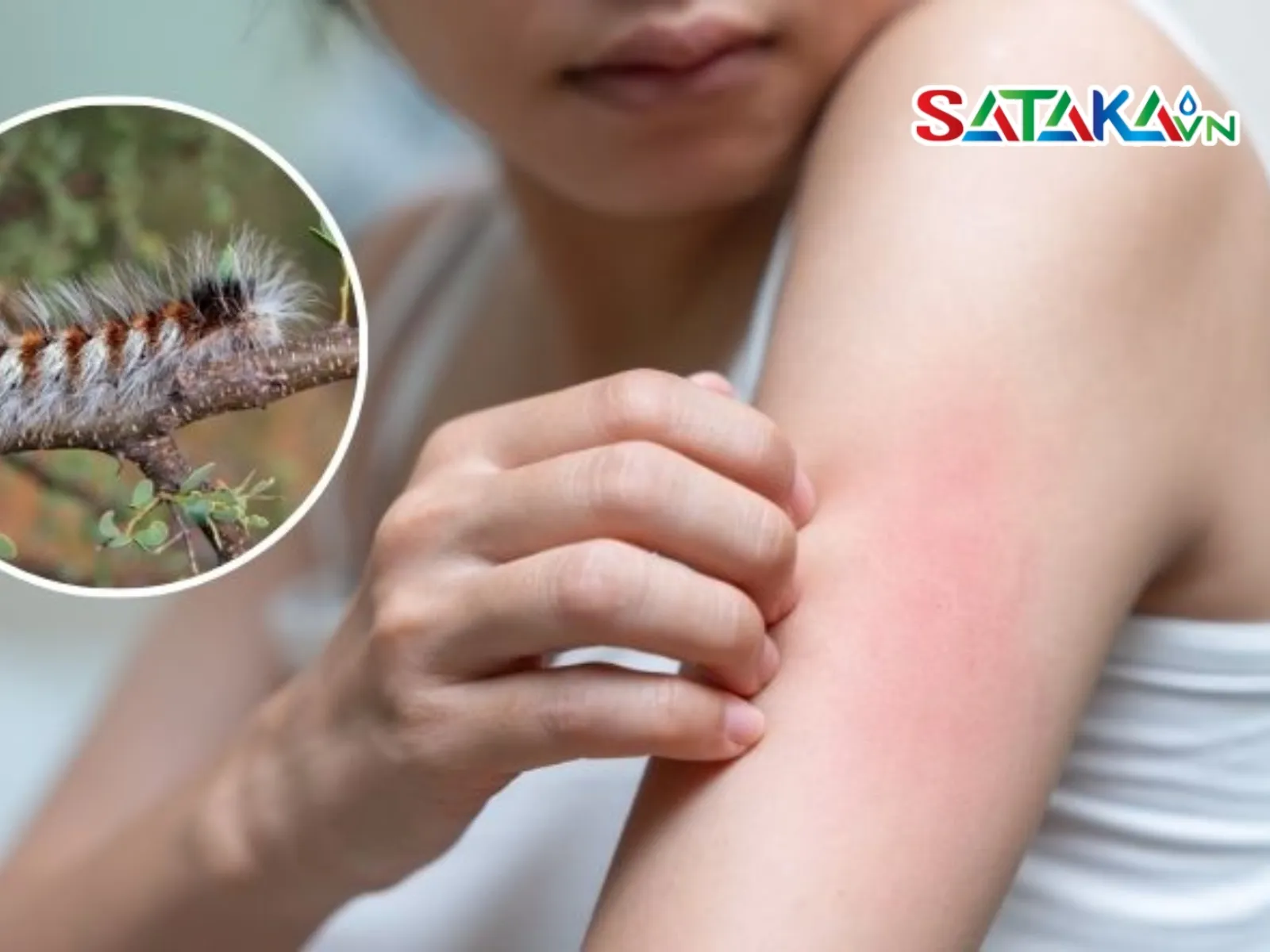Discover effective ways to kill caterpillars to protect your crops. From natural methods to safe chemicals, keep your garden green!
Caterpillars pose a significant challenge in garden care, damaging leaves and affecting crop productivity. This article by Sataka introduces natural and safe chemical methods to eliminate caterpillars, along with preventative measures to maintain a healthy garden.
Caterpillars are the larval stage of butterflies or moths, belonging to the insect class. During their lifecycle, caterpillars go through four main stages: egg, larva, pupa, and adult. The larval stage (caterpillar) is the most destructive to plants, as they consume leaves and cause direct damage to vegetation.
Caterpillars can cause significant damage to plants, especially leafy crops. Common signs of infestation include:

Caterpillar
There are two main reasons why controlling caterpillars is crucial:
Caterpillars can quickly destroy foliage, leaving plants bare within a few nights. This is especially harmful to young or weak plants, potentially causing them to wither and die.

Caterpillars eat leaves
Caterpillars not only harm plants but also pose health risks to humans. Their hairs can cause burning sensations, itching, and skin swelling upon contact. Excessive scratching can worsen the condition.
Certain species, such as banana caterpillars, are more toxic and can cause symptoms like headaches, dizziness, and nausea. Therefore, controlling caterpillars helps protect both plants and human health.

Affects human health
Many people prefer natural methods to control caterpillars to protect the environment and human health. Here are some effective ways to eliminate caterpillars without using harmful chemicals:
Mix soap with water and spray it onto leaves, especially areas with caterpillars. This solution clogs their breathing pores, killing them quickly.
Garlic extract is an effective natural pesticide due to its antibacterial and insect-repellent properties. Crush garlic, mix it with water, and spray the solution on leaves to create a natural barrier against caterpillars.
Green tea contains compounds that repel insects. Brew green tea, dilute it with water, and spray it on plants to deter caterpillars.

Attract natural enemies
Scatter coffee grounds around the base of plants and on the soil surface. The scent of coffee repels insects, protecting plants effectively.
Encourage natural predators like birds and beneficial insects to help control caterpillars. Planting flowers can attract these predators, reducing caterpillar populations naturally.
While natural methods are often effective, chemical measures may be necessary for quick and thorough caterpillar control. Here are some safe chemical options:
Pesticides containing Bacillus thuringiensis (Bt) are safe for humans and animals but highly effective against caterpillars. When ingested, Bt paralyzes the caterpillar’s digestive system, leading to death. Spray the pesticide directly on infested areas for best results.
Plant-derived chemicals like neem oil are effective in controlling caterpillars. Neem oil inhibits caterpillar growth and prevents molting. Dilute neem oil with water and spray it on leaves to create a protective barrier.
For severe infestations, low-toxicity chemical pesticides like permethrin or cyfluthrin can be used. These are safe for humans and pets when applied correctly.
When implementing caterpillar control measures, keep the following in mind to ensure safety and effectiveness:

Be careful when killing caterpillars
Mastering caterpillar control helps protect plants, human health, and the environment. Whether using natural or chemical methods, proceed carefully and with a plan. The information in this Sataka article will empower you to apply suitable measures confidently, maintaining a lush and healthy garden.